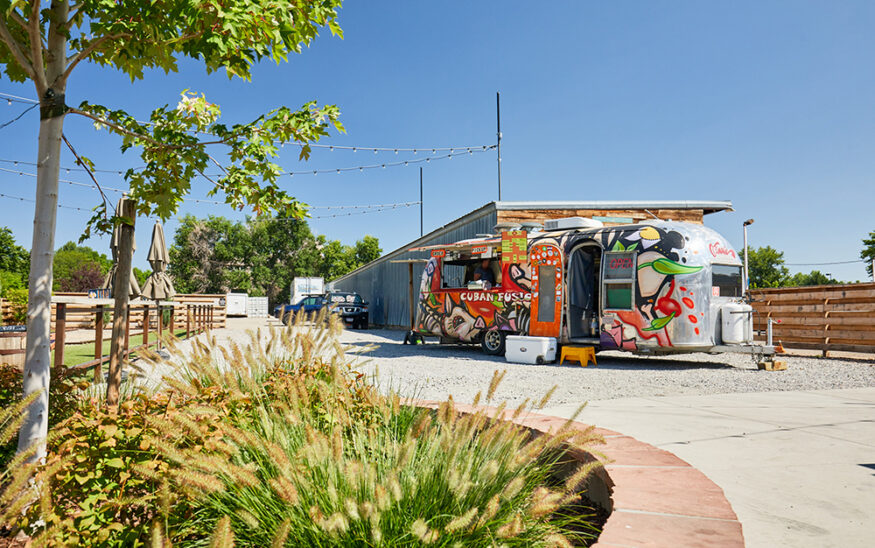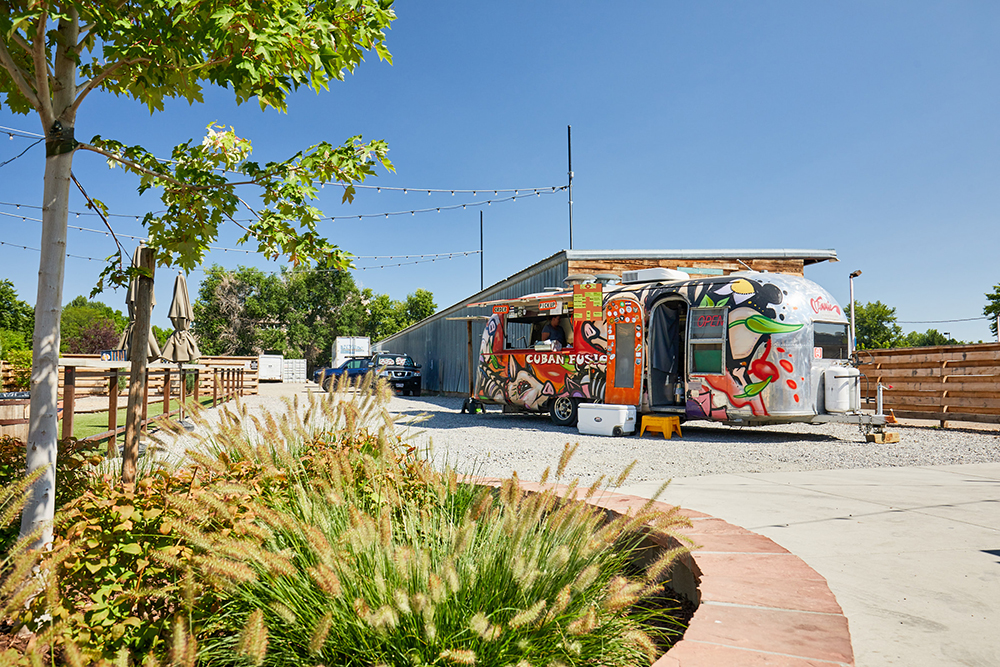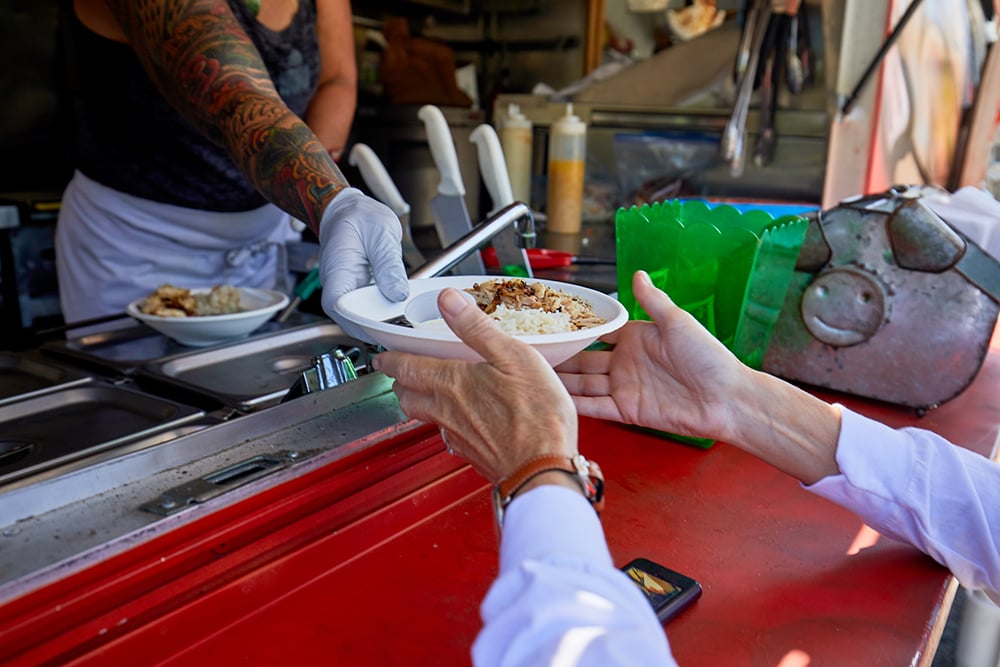

Fast-Moving Food Trend
Rolling restaurants emerge across the state
Gigi Sukin //October 15, 2018//

This March, Denver was recognized as the second-most food-truck friendly-city in the country by the U.S. Chamber of Commerce Foundation’s annual “Food Truck Nation” report.
And Denver ranked No. 1 for permitting and licensing requirements, thanks to its uncomplicated processing and low start-up fees.
“Starting a food truck is easy and straightforward,” the Denver section of the Food Truck Nation report claimed. “Operating a food truck and maintaining compliance are equally straightforward.”
Not so fast …
“It takes a ton of work,” says Hosea Rosenberg, executive chef and owner of Boulder’s Blackbelly, which began as a food truck back in 2011 and evolved into a permanent location in 2014.
WHY THE SUDDEN EXPLOSION?
Food trucks serve as vehicles for entrepreneurial activity and economic growth.
The industry is estimated to have reached $2.7 billion in revenue in 2017, according to Emergent Research. Though this number represents a mere fraction of the $799 billion in restaurant sales last year, the estimate shows a sizable increase from the $650 million food trucks pulled in revenue only a few years before. Food industry experts cite the Great Recession for food trucks’ uptick in popularity, driven by the affordable prices attached to gourmet eats. Without the added cost of wait staffs, these quick-service kiosks, carts and trailers have lower overhead than restaurants and can be moved if one location does not attract enough business to pay the bills.
Add that to a collective consumer desire for convenience and social media serving as a marketing tool for these eateries on-the-move, and the momentum makes sense.

COLORADO’S WARM EMBRACE
In Denver, the number of food trucks has more than tripled since 2014, and the trend has spread beyond the Mile High City. From Pueblo to Fort Collins, mountain towns to Front Range suburbs, the lunch wagons, taco trucks and more are taking to the streets.
“Colorado has really seemed to embrace the concept of food trucks,” says Mircea Vlaicu, senior growth marketing manager of California-based Roaming Hunger, a company that tracks the movements of food trucks nationally. “Colorado has embraced the idea of experiencing more than just your typical food trucks, too.”
Produced by Civic Center Conservancy, Civic Center EATS gathers about 25 food trucks during lunchtime Tuesdays, Wednesdays and Thursdays, May through October. This year, more than 80 trucks participated throughout the warm weather months, drawing 1,000 to 2,000 diners.
“We do our best to look at Civic Center EATS anew every single year,” says Eric Lazarri, director of operations for the Civic Center Conservancy. “We do that in order to provide as much variety as possible.”
Lazarri speaks of the “normalization of food truck culture,” that has taken place over the 13-year history of Civic Center EATS. “We never set out to be a hospitality incubator, but we realize we have become that. Getting into Civic Center EATS is something these businesses put in front of investors and bankers. The branding and exposure is so good.”
He adds that some vendors have, historically, used their truck tenure to test their concepts before committing to more permanent culinary platforms.
“It’s a lower capital option to test and refine your concept,” Lazarri says, noting that the Pinche Taco truck preceded Kevin Morrison’s two-location Tacos Tequila Whiskey, and Chuey FU’s, which opened its first brick and mortar at 1131 Santa Fe in Denver after four years on the road.
“It was the plan all along to go from truck to storefront,” Chuey FU’s owner Joseph Knoblich says. “It was a proof-of-concept phase for me.” His Latin-Korean fusion made its debut from a $22,000 rehabbed truck he bought at auction.
“The truck is still free marketing,” Knoblich says of his decision to continue operating the original concept.
Similar to Civic Center EATS, the FoCo Food Truck Rally parks in Fort Collins’ City Park from May through August each Tuesday evening. In Boulder, food trucks park at the bi-weekly farmers market and brew pubs such as Upslope Brewery, Gunbarrel Brewing Co. and Sanitas Brewing Co.
In Colorado Springs, El Paso County Public Health lists more than 220 licensed mobile vendors in its system, including nearly 40 “prepackaged” mobiles, primarily serving ice cream.
In Pueblo, Andrew Shah’s Shah Kabob is one of very few food trucks in the community, serving Middle Eastern food with American influences, such as barbecue and green chili kabob varieties.
“We just found a couple good locations and stuck to them,” Shah says of his startup strategy that kicked off in December 2016. Within six months, he bought a second trailer and converted it. Shah says trucks range from $35,000 to $100,000. He and his dad built his from the ground-up, watching YouTube videos and using mechanically inclined intuition.
“First and foremost, you have to have a good product,” Shah says. “Couple that with unique marketing – Facebook, Instagram and videos for us – and it works.”
Recently, Shah leased a storefront to plant Shah Kabob more permanently.
“Our plan from the get-go was to have a restaurant,” Shah says. He expects to have the brick-and-mortar operation up and running by September.
CHALLENGES

“I think a lot of people underestimate food trucks,” Shah says. “On the surface they look simple – easier than a restaurant. But there are so many variables. Your generator might break; you might run out of propane in a big rush; the elements aren’t always on your side; if you run out of something, you have to go to your commissary to pick it up.”
Like any new business, starting a food truck comes with the hurdles of long hours, costly permits, finding good employees, hitting the road and getting traction.
According to the National Food Truck Association, operating a food truck means 12- to 16-hour days. And then there’s city and state regulation. On average, starting and maintaining a food truck for just one year requires the completion of 45 individual government-mandated procedures.
But those in the business think it’s well worth the hassle, Roaming Hunger’s Vlaicu says.
“The opportunities,” he says, “are being your own boss, having the freedom to make the kind of food you want and being part of an amazing community of small business owners.”
























